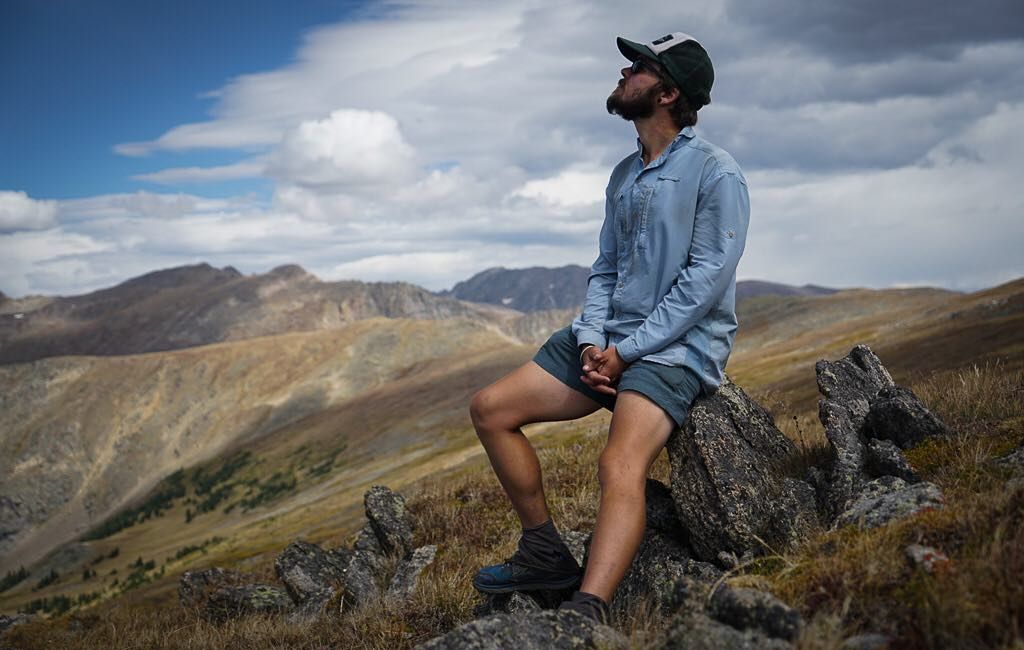Trek in Comfort: How to Choose the Perfect Hiking Shirt
Hiking shirts are an essential part of any hiker’s wardrobe. They provide comfort, protection, and functionality while on the trail. In the following sections, we will guide you through the important factors to consider when choosing a hiking shirt, such as the type of material, the fit, the style, and the intended use. We’ll also provide an overview of different hiking shirt types and materials and conduct comparisons of various brands and models to help you select the ideal shirt for your hiking needs.


Key Considerations
Fabric
The fabric of a hiking shirt plays a significant role in its performance. There are several factors to consider when choosing the right fabric, such as durability, breathability, moisture-wicking, sun protection, and odor resistance.
- Durability: A durable hiking shirt is essential for withstanding the wear and tear of the trail. Look for materials that resist abrasion and have reinforced stitching to ensure the shirt lasts through many hikes.
- Breathability: Breathable fabrics allow air to flow through the material, which helps regulate body temperature and prevent overheating. This is crucial for staying comfortable during long hikes in warm weather.
- Moisture-wicking: Moisture-wicking fabrics draw sweat away from the skin and dry quickly, keeping you dry and comfortable during your hike.
- Sun protection: Many hiking shirts offer built-in UPF (Ultraviolet Protection Factor) protection, which helps shield your skin from harmful UV rays.
- Odor resistance: Some fabrics have natural or treated odor-resistant properties, which can be useful on multi-day hikes when washing your shirt may not be an option.
Fit
The fit of a hiking shirt is essential for both comfort and functionality. A well-fitting shirt should allow for ease of movement without being too loose or restrictive. Consider the following when selecting the fit of your hiking shirt:
- Sizing: Use the brand’s sizing chart to determine the appropriate size for your body measurements.
- Comfort: The shirt should feel comfortable and not restrict your movement, especially in the shoulder and arm areas.
- Layering: Consider how the shirt will fit with other layers you may wear during your hike, such as base layers or jackets.
Style
Hiking shirts come in various styles, including short sleeve, long sleeve, and sleeveless options. The style you choose will depend on your personal preference and the type of hiking you plan to do.
- Short sleeve: Short sleeve hiking shirts are ideal for warm weather hikes, as they provide maximum ventilation and keep you cool.
- Long sleeve: Long sleeve shirts offer more coverage and protection from the sun, insects, and brush. They can also be rolled up for added versatility.
- Sleeveless: Sleeveless hiking shirts can be a good option for hot weather hikes where maximum breathability is desired. However, they provide less sun and insect protection than sleeved options.
Types of Hiking Shirt Materials
Synthetic
Synthetic materials, such as polyester and nylon, are popular choices for hiking shirts due to their durability, breathability, and moisture-wicking properties. They also tend to be lightweight and quick-drying, making them ideal for hiking in warm or wet conditions.
Pros:
- Lightweight
- Moisture-wicking
- Quick-drying
- Durable
Cons:
- May be less comfortable against the skin compared to natural fibers
- Can retain odors over time
Wool
Wool, particularly merino wool, is another popular material for hiking shirts. It offers excellent moisture-wicking, breathability, and odor resistance. Wool is also a natural insulator, providing warmth in cold conditions while remaining cool in warmer temperatures.
Pros:
- Excellent moisture-wicking and breathability
- Natural odor resistance
- Temperature regulating
Cons:
- Can be more expensive than synthetic options
- May be less durable than synthetic materials
Cotton
Cotton is generally not recommended for hiking shirts, as it absorbs moisture and takes a long time to dry. This can cause discomfort and chafing during hikes, especially in hot or wet conditions.
Pros:
- Soft and comfortable against the skin
Cons:
- Not moisture-wicking
- Slow to dry
- Can cause chafing when wet
Comparisons and Recommendations
When selecting a hiking shirt, it’s crucial to consider your specific needs and preferences. The ideal shirt will vary depending on factors such as the climate, terrain, and the intensity of your hikes. To help you make an informed decision, we’ve put together some recommendations based on various factors:
Best Overall Hiking Shirt: Patagonia Capilene Cool Trail Shirt (Synthetic)
The Patagonia Capilene Cool Trail Shirt offers a great balance between comfort, durability, and breathability. Made from synthetic materials, it wicks moisture away from your skin, dries quickly, and provides excellent odor control. With its lightweight design and UPF 50+ sun protection, this versatile shirt is perfect for a wide range of hiking conditions.
Best Wool Hiking Shirt: Smartwool Merino 150 Base Layer (Wool)
For those who prefer natural fibers, the Smartwool Merino 150 Base Layer is an excellent choice. Made from high-quality merino wool, this shirt offers natural temperature regulation, moisture-wicking, and odor resistance. Its soft, comfortable fabric is perfect for both warm and cold weather hikes, making it a versatile option for any outdoor enthusiast.
Best Budget Hiking Shirt: Columbia Silver Ridge Lite Shirt (Synthetic)
If you’re looking for a more budget-friendly option without sacrificing quality, the Columbia Silver Ridge Lite Shirt is a fantastic choice. This lightweight, synthetic shirt features Omni-Wick technology for efficient moisture management and Omni-Shade UPF 40 sun protection. It also boasts vented panels for enhanced breathability, making it an excellent option for hot-weather hikes.
Remember to consider the fabric, fit, style, and function when selecting your hiking shirt. The right fabric will ensure optimal moisture-wicking, breathability, and temperature regulation, while the proper fit and style will provide comfort and ease of movement. Additionally, consider any extra features such as sun protection, odor resistance, and ventilation that may be beneficial for your specific hiking needs.
With the right shirt, you’ll be well-equipped for any hiking adventure that comes your way. Happy trails!
